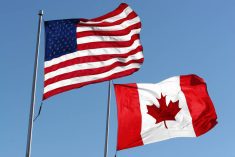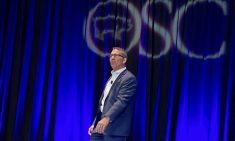Federal agriculture minister Marie-Claude Bibeau tried last week in a round of media interviews to set the record straight on the government’s fertilizer emissions reduction goal.
But many remain skeptical about the Liberal government’s plan to reduce emissions by 30 percent by the end of 2030 and suggest the plan is to ban fertilizer use or implement a tax if the target isn’t met.
“There is a lot of misinformation going on right now,” Bibeau said in an Aug. 9 interview. “I just wanted to reiterate that we’re really talking about reducing emissions caused by fertilizer. We’re not talking about having any intention of limiting the use of fertilizer itself. The idea is to use them in the most sustainable way possible.”
Read Also

Storm dynamics and extreme rainfall
Besides moisture, instability and orographic lift, the next biggest factor that contributes to heavy or extreme rainfall is storm dynamics.
The minister said the target is voluntary, not a mandate, and Conservatives who say a ban is coming are wrong.
“It’s not true. We have always said that this is a voluntary target,” she said. “We want to be ambitious because we have to move the needle. If we send the message that business as usual is good enough, it’s not.
“I think when we have a target, we need a date. If we don’t the target doesn’t mean anything anymore.”
Prairie farmers have resisted the plan since it was first revealed in 2020. Consultations opened in March and conclude at the end of August. Bibeau urged strong participation so that the government moves forward “taking into consideration the real world in which we are living.”
According to the 2022 National Inventory Report, fertilizer emissions in 2020 were the equivalent of 11.82 megatonnes of carbon dioxide. The government said the number is based on synthetic fertilizer use, and considers the impacts of tillage and indirect emissions from leaching and volatilization.
Branden Leslie, manager of policy and government relations at Grain Growers of Canada, said more precise data is needed for both the baseline and emission measurement.
“The current structure of a coefficient and rainfall amounts based on sales, not actual use, is certainly a challenge,” he said.
4R nutrient management has been widely adopted in the past few years and the government has to remember the steps farmers have taken, voluntarily, to reduce emissions through better management practices like that, he said.
Newer technologies such as gene editing could help by, for example, developing cereal crops that use nitrogen more efficiently and require less application, he said.
Farmers will adopt practices to do their part, Leslie said, but they also require that the government understands how farmers have reduced emissions intensity while producing more food.
“I think it’s important that we try to balance the goal of reducing greenhouse gas emissions from fertilizer applications and more broadly from on farm use against farm profitability and productivity and economic growth and global food security,” he said.
Leslie added the government’s delay between announcing the target and providing more details hasn’t helped farmers understand what the plans actually are.
“We’ll take the minister at her word,” he said, regarding the voluntary target. “I think to reach 30-percent reduction by 2030, in seven growing seasons or less, would take an extremely high adoption rate.”
GGC is finalizing its submission to the consultation process based on what its member organizations have said.
“We’re acutely aware of the concerns raised by farmers,” he said.
Weyburn, Sask., farmer Dan Cugnet, who is also in the energy sector, is among those who have publicly expressed concerns.
He worries the federal government will implement a tax on fertilizer companies and users if the target isn’t met. He likens it to the price on pollution or carbon tax.
“I am a person that is kind of mistrustful of the intentions of our federal government when it comes to ag, just like I have been with energy,” he said. “I don’t want to mistrust my federal government but frankly there haven’t been a lot of things they’ve done to try and gain it the last seven odd years.”
He said the government is using language to build public sentiment regarding an industry that emits while consumers deal with rising food costs and inflation.
“They’re starting to set the table to give themselves that option,” he suggested.
The federal debt and deficit have ballooned during the last couple of years and government, no matter the political stripe, will be looking at ways to raise money.
“It’s far more tenable to sell to Eastern Canada ‘We’re saving the environment’ than to jack up the GST by three or four percent, which is politically untenable for them,” said Cugnet.
Bibeau insisted there are no plans beyond the target to reduce emissions and noted her department has invested significantly in programs to develop better technology and equipment to help farmers transition.
“We want them to be sustainable, and sustainable means economically sustainable as well,” she said.
















